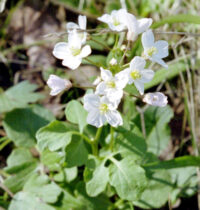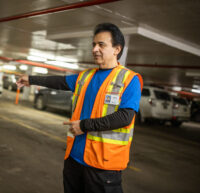By Fred Allebach | Sonoma Valley Sun — The Sonoma Ecology Center’s Sustainable Sonoma project is one of positive vision, to unite the common goals and interests of Valley government, business and residents. Sustainable Sonoma is an effort to say, “if we work together on common sense solutions, for issues of common interest, we might be better off.”
Just how to admit there are problems, define sustainable, get along, and bring in partners with different interests will be the challenge.
What is sustainability anyway? Sustainability means harvesting natural resources in a manner whereby human systems endure. As a whole, sustainability is gained through what is typically referred to as a “triple bottom line” or ‘three pillars” method, where environment, society and economy are all pillars whose respective bottom lines need to be congruent. Sustainability, by definition, shoots for a carrying capacity level of human activity, and demands a systemic, long-term view. Endless growth is very likely unsustainable for a large world population with finite resources.
Sustainability also hinges on definitions of possible futures. Within the sustainability field, there are differences of opinion as to whether we need to conserve and dial back our impacts, or keep up our same behavior but simply change the channel through new technology and green energy replacements.
Fundamental pragmatic and ideological contradictions come into play here, between controlled growth and a free market that resists limits. Thus there are hybrid concepts like “sustainable growth” or “green economy” that for many, constitute a transparent attempt at feel-good greenwashing. Indeed, for government policy and business marketing purposes, sustainable has been conflated with green and environmental practices only, to create a certification that will then sell or comply. In greenwashed sustainability, social and economic equity are often ignored.
Many Sonoma Valley actors see their interests in conflict. Progressive civil society groups and individuals are critical of local non-profits, seeing them as part of the “non-profit industrial complex.” The perception here is that necessary structural change is minimized, while non-profits accept trickle down funding in exchange for not challenging an unsustainable status quo.
More mainstream players see the grassroots as unnecessarily rigid, purist, and confrontational. All parties, though, see there are serious issues in need of addressing. Working together and honestly addressing differences seems like a good place to start. As Kim Jones of the SEC said, “Anyone who shares a genuine interest in helping to achieve a just, sustainable, thriving community in Sonoma Valley needs to be at the table.”
But how to broker a unified approach among traditionally antagonistic and isolated parties?
The crux of the issue here is how to define sustainable so that all local actors can agree it is fair, desirable, in their interests. Change can emerge from within the system through a reasonable process or more likely, from without, through a messy resolution of tensions.
“Sustainable Sonoma will rely on its partners—all of us diverse people and interests who make up this community and see its problems and its promise—to hold tight to its vision of achieving a just, sustainable, thriving community in Sonoma Valley,” Jones said.” We have to hold each other accountable, and create reporting that lets the community also hold us accountable.”
Getting to actual sustainability is a big challenge, not because we are not smart enough, but because actors tend to get tripped up by locked-in primary assumptions, and then can’t see out of those boxes. Collectively we’ve got to be nimbler and more flexible to be sustainable.
On the Sustainable Sonoma webpage, the SEC states, “We see that environmental aims cannot be fully supported by a community until social inequities are addressed and economic success is seen as compatible with environmental vitality.” This statement introduces triple bottom line thinking, and frames it as in everyone’s interest.
Sustainability also calls for systems literacy, which means using our smarts to achieve triple bottom line ends. The Health Care District and La Luz Center are opening up systems literate methods. They look at the Valley as an interconnected system, where opportunities for connection, to create health, wealth, wellness, equity, and sustainability are being missed.
To the extent that “sustainable tourism” can be fostered, the Valley could become an authentic leader. If triple bottom line methods are partnered with wine, tourism and hospitality, benefits can be spread more equitably, to a diverse demographic, and a fantastic, vital environment preserved.
Sustainable tourism is a known entity with demonstrable examples. Unfortunately for Napa County, efforts at sustainability (by NapaVision 2050) have been fought tooth and nail by the wine/hospitality industry, and the Napa County Board of Supervisors. Similar tensions exist now in Sonoma Valley and county as well. The Sustainable Sonoma project has its work cut out, to reel in the unsustainable, frame things so BAU forces will buy in, and to integrate grass roots, non-BAU advocates and activists as well.
The coming Groundwater Sustainability Agency process here in Sonoma Valley will be a test of Valley parties being able to work towards one aspect of sustainability. Keep an eye on that.
A sustainable outcome for Sonoma Valley implies a sacrifice of vested interests and partisan visions, a healing of class and cultural divisions, a definition of common goals, and a laying out of pragmatic areas of cooperation. Sonoma Valley has many common issues calling to be addressed: affordability, social inequality, proper land use and planning, proper level of tourism, a need to diversify ag, a realization of goals in the Food Action Plan, groundwater depletion, keeping healthy surface water, an aging population with growing needs, transportation greenhouse gas generation, to name a few.
Can the current luxury economy, that by definition has high negative environmental and social impacts, be transformed to work for a more widespread good? How to harness the self-interest that drives economic actors towards ends more focused on wider social and environmental benefits?
Working together in good faith and establishing relationships, and common goals, may start to affect needed changes. What is needed is not an attempt to make business as usual sustainable, and attempt to have green energy and technology save us without any real pain or sacrifice. Hard issues have to be addressed — not greenwashed over.
All the great ideas in the world won’t matter a hoot if there is not the will and desire to step up and address sustainability at a level commensurate with the problems at hand. Hopefully the Sustainable Sonoma program can provide a good path forward for Sonoma Valley.






Be First to Comment